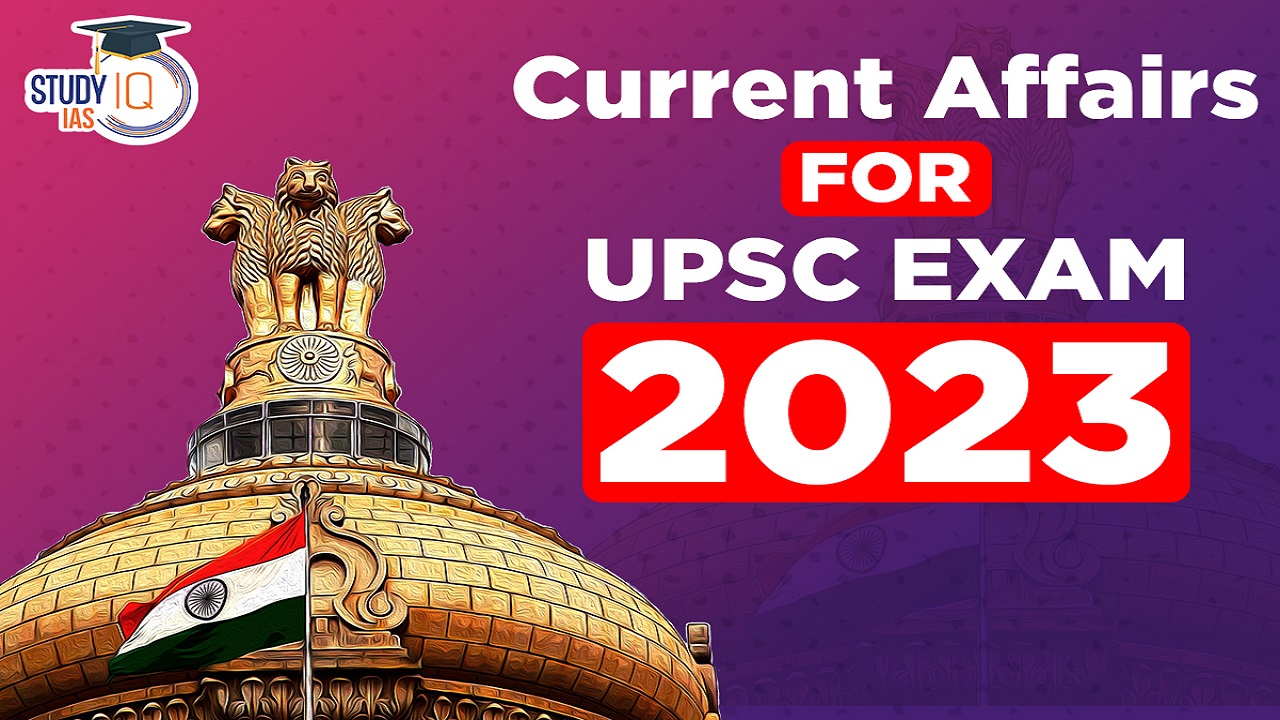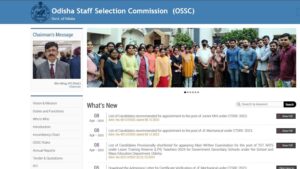Current Affairs 2nd August 2023 for UPSC Prelims Exam
Goods and Services Tax (GST)
Context: India’s gross revenues from the Goods and Services Tax (GST) has hit a three-month high to cross ₹1.65 lakh crore in July 2023.
About Goods and Services Tax (GST)
- Definition: Goods and Services Tax (GST) is an indirect tax system introduced in India on July 1, 2017, which subsumed multiple indirect taxes levied by the central and state governments, such as VAT, excise duty, and service tax.
- GST is a value-added tax that is levied on the supply of goods and services, from the manufacturer to the consumer and is designed to create a common national market by eliminating barriers to interstate trade.
- Salient Features of GST:
- One Nation, One Tax: GST replaced multiple indirect taxes levied by the Central and State Governments, such as excise duty, service tax, value-added tax (VAT), and others. It brought uniformity in the tax structure across India, eliminating the cascading effect of taxes.
- Dual Structure: GST operates under a dual structure, comprising the Central GST (CGST) levied by the Central Government and the State GST (SGST) levied by the State Governments.
- In the case of Inter-state transactions, Integrated GST (IGST) is applicable, which is collected by the Central Government and apportioned to the respective State.
- Import of goods or services would be treated as inter-state supplies and would be subject to IGST in addition to the applicable customs duties.
- Destination-based Tax: GST is a destination-based tax, levied at each stage of the supply chain, from the manufacturer to the consumer. It is applied to the value addition at each stage, allowing for the seamless flow of credits and reducing the tax burden on the end consumer.
- Input Tax Credit (ITC): GST allows for the utilization of input tax credit, wherein businesses can claim credit for the tax paid on inputs used in the production or provision of goods and services. This helps avoid double taxation and reduces the overall tax liability.
- Online Compliance: GST introduced an online portal, the Goods and Services Tax Network (GSTN), for registration, filing of returns, payment of taxes, and other compliance-related activities. It streamlined the process and made it easier for taxpayers to fulfill their obligations.
- Anti-Profiteering Measures: To ensure that the benefits of GST are passed on to the consumers, the government established the National Anti-Profiteering Authority (NAA). The NAA monitored and ensured that businesses do not engage in unfair pricing practices and profiteering due to the implementation of GST.
- Increased Compliance and Transparency: GST aims to enhance tax compliance by bringing more businesses into the formal economy. The transparent nature of the tax system, with the digitization of processes and electronic records, helps in curbing tax evasion and increasing transparency.
- Sector-specific Exemptions: Certain sectors, such as healthcare, education, and necessities like food grains, are given either exempted from GST or have reduced tax rates to ensure affordability and accessibility.
- Problems with GST:
- State resources are decreasing: The implementation of the GST regime, as well as a rise in state participation for Centrally Sponsored Schemes (CSSs), had placed the state’s finances at risk.
- The share of State GST collection [including GST compensation receipts] in the majority of States in the Gross State Domestic Product [GSDP] does not show strong growth since 2017 compared to pre-GST era.
- Increasing reliance on the Centre: States’ reliance on the Centre for revenue has grown.
- Revenue generation capacity: Leaving a few exceptions, such as petroleum products, property tax, and alcohol excise, most indirect taxes have been subsumed under GST regime. This has eroded the ability of states to raise their own revenues.
- Shortfall in devolution: There have been significant differences in the mount of GST compensation owed and actually paid by the centre.
- Specially Uttar Pradesh, Bihar and Jharkhand received less amount, whereas these are the states that need greater fiscal support.
Current Affairs 1st August 2023 for UPSC Prelims Exam
Narcotics Control Bureau (NCB)
Context: In a major crackdown on the narcotics trade, the Narcotics Control Bureau (NCB) has caught 2 international drug cartels operating through the darknet and arrested 22 individuals.
About Narcotics Control Bureau (NCB)
- Background: The National Policy on Narcotic Drugs and Psychotropic Substances is based on the Directive Principles, contained in Article 47 of the Indian Constitution, which direct the State to endeavour to bring about prohibition of the consumption, except for medicinal purposes, of intoxicating drugs injurious to health.
- The government’s policy on the subject which flows from this constitutional provision is also guided by the international conventions on the subject.
- India is a signatory to the single Convention on Narcotic Drugs 1961, as amended by the 1972 Protocol, the Conventions on Psychotropic Substances, 1971 and the United Nations Convention against Illicit Traffic in Narcotic Drugs and Psychotropic Substances, 1988.
- Definition: The Narcotics Control Bureau (NCB) is a central law enforcement and intelligence agency in India that has been tasked with combating drug trafficking and the use of illegal substances under the provisions of the Narcotic Drugs and Psychotropic Substances Act, 1985.
- Ministry: NCB is under Ministry of Home Affairs.
- Functions:
- Co-ordination of actions by various offices, State Governments and other authorities under the N.D.P.S. Act, Customs Act, Drugs and Cosmetics Act and any other law for the time being in force in connection with the enforcement provisions of the NDPS Act, 1985.
- Implementation of the obligation in respect of counter measures against illicit traffic under the various international conventions and protocols that are in force at present, or which may be ratified or acceded to by India in future.
- Assistance to concerned authorities in foreign countries and concerned international organisations to facilitate coordination and universal action for prevention and suppression of illicit traffic in these drugs and substances.
- Coordination of actions taken by the other concerned Ministries, Departments and Organizations in respect of matters relating to drug abuse.
- Analysis of seizure data, study of trends and modus operandi.
- Preparation of National Drug Enforcement Statistics.
Aspartame
Context: The World Health Organization (WHO) recently declared aspartame, an artificial sweetener used in the food industry, as a possible carcinogen.
More on News
- WHO has declared Aspartame as a possible carcinogen.
- Carcinogens are substances that can cause cancer to humans. There are four levels of carcinogens:
About Aspartame
- Definition: Chemically, aspartame is a methyl ester of the dipeptide of two natural amino acids, L-aspartic acid and L-phenylalanine.
- Discovered by: It was discovered by James M Schlatter, a chemist at the American pharmaceutical company G D Searle & Co. (which is now a subsidiary of Pfizer) in 1965.
- Properties: Aspartame is around 180 to 200 times sweeter than sucrose (table sugar). Due to this property, even though aspartame produces 4 kcal (17 kJ) of energy per gram when metabolized, the quantity of aspartame needed to produce a sweet taste is so small that its caloric contribution is negligible.
- Uses:
- Aspartame is one of the world’s most common artificial sweeteners and is used in a wide range of diet soft drinks, sugar-free chewing gum, sugar-free ice cream, sugar-free breakfast cereals, etc.
- Aspartame is preferred by people trying to cut calories or lose weight, or by diabetics, because while 2 teaspoons (8 g) of sugar provides about 32 kcals of energy, 1 g of aspartame is only 4 kcals.
- It is often argued that a 12 fl oz (about 350 ml) can of regular cola contains about 10 teaspoonfuls of sugar.
- While the same quantity of diet cola containing aspartame has only 7 kcals.
- That is why Cans/ bottles of diet fizzy drinks often say “zero sugar” or “zero calories” on the packaging.
- Aspartame is present in several brands of artificial sweeteners, the most common of which in India are Equal and Sugar-Free Gold.
- List of products that use Aspartame:
- Diet Coke Coca-Cola
- Extra sugarfree Mars chewing gum
- Jell-O Sugarfree gelatin dessert mix
- Snapple zero sugar tea and juice drinks
- Sugar Twin 1 sweetener packets
- Equal zero calorie sweeteners
- Trident sugar-free peppermint gums
Palaeo Proxies
Context: The observation of a particular day in July was the warmest in more than a 100,000 years cannot be scientifically possible as the use of “paleo proxies” can provide insights into temperature anomalies only over longer timescales.
About Paleo Proxies
- Definition: Temperature estimates from before thermometers were invented are derived from “palaeo proxies”.
- Paleoclimate proxies are physical, chemical and biological materials preserved within the geologic record (in paleoclimate archives) that can be analyzed and correlated with climate or environmental parameters in the modern world.
- Types:
- Direct/ Indirect Proxies:
- Some proxies, such as atmospheric gases trapped in glacial ice (e.g., carbon dioxide and methane), provide a relatively direct measurement of atmospheric chemistry at the time the ice formed and was sealed off from the atmosphere.
- Other proxies are less direct, such as stable isotope measurements (e.g., oxygen and carbon) from shells of marine organisms. These indirect proxies require calibration studies in the modern system to establish the relationship between climate processes and the proxy.
- Physical Proxies: Physical proxies include characteristics such as sediment composition, texture, structure, color, density, and magnetic properties, among others. Scientists use changes in physical properties of archive materials to infer past climate conditions.
- Biological Proxies: They include remains of living organisms, such as pollen, foraminifera (single-celled, microscopic organisms that bear an external chambered shell), mollusks, and ostracodes (small members of the Crustacean (shrimp) family that are encased by two shells).
- Because the distribution of these organisms is controlled by temperature, moisture availability, and other environmental factors, their presence in a sample allows scientists to make inferences about the climate when the sample was deposited.
- Chemical Proxies: The chemical composition of shells of aquatic organisms is affected by the chemistry of the water in which they form. Water, in turn, is influenced by temperature and precipitation. Consequently, shell chemistry (stable isotope and elemental composition) is one example of a chemical proxy of temperature and precipitation.
- Direct/ Indirect Proxies:
- Uses:
- Scientists combine proxy-based paleoclimate reconstructions with instrumental records (such as thermometer and rain gauge readings) to expand our understanding of climate variability to times before humans began measuring these things.
- These data help us understand how the Earth’s climate system varied both before and after human alteration of the landscape.
- Through use of paleo proxies, the experts wish to understand whether any warming during the Holocene epoch can tell reveal something about the response of modern humans to climate change.
- Limitation: The paleo proxies contain ocean water and microbes within; hence they provide information over such long timescales. From these objects, it is almost impossible to estimate daily temperature, decadal or annual changes in long-term temperature.
- Scientists derive estimates of temperature anomalies over shorter time scales from tree rings, corals, and the shells of marine and terrestrial organisms. But even here, these palaeo proxies only provide weekly or seasonal timescale temperature anomaly estimates. Hence, there is no “palaeo proxy” that can give daily timescale temperatures.


 Daily Quiz 18 April 2025
Daily Quiz 18 April 2025
 OSSC CGL Syllabus 2025 and Exam Pattern ...
OSSC CGL Syllabus 2025 and Exam Pattern ...
 AI and its Regulation in India, Limitati...
AI and its Regulation in India, Limitati...





















